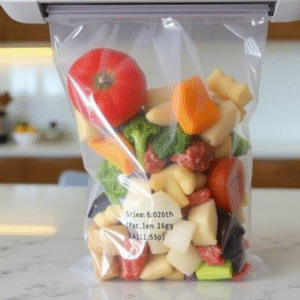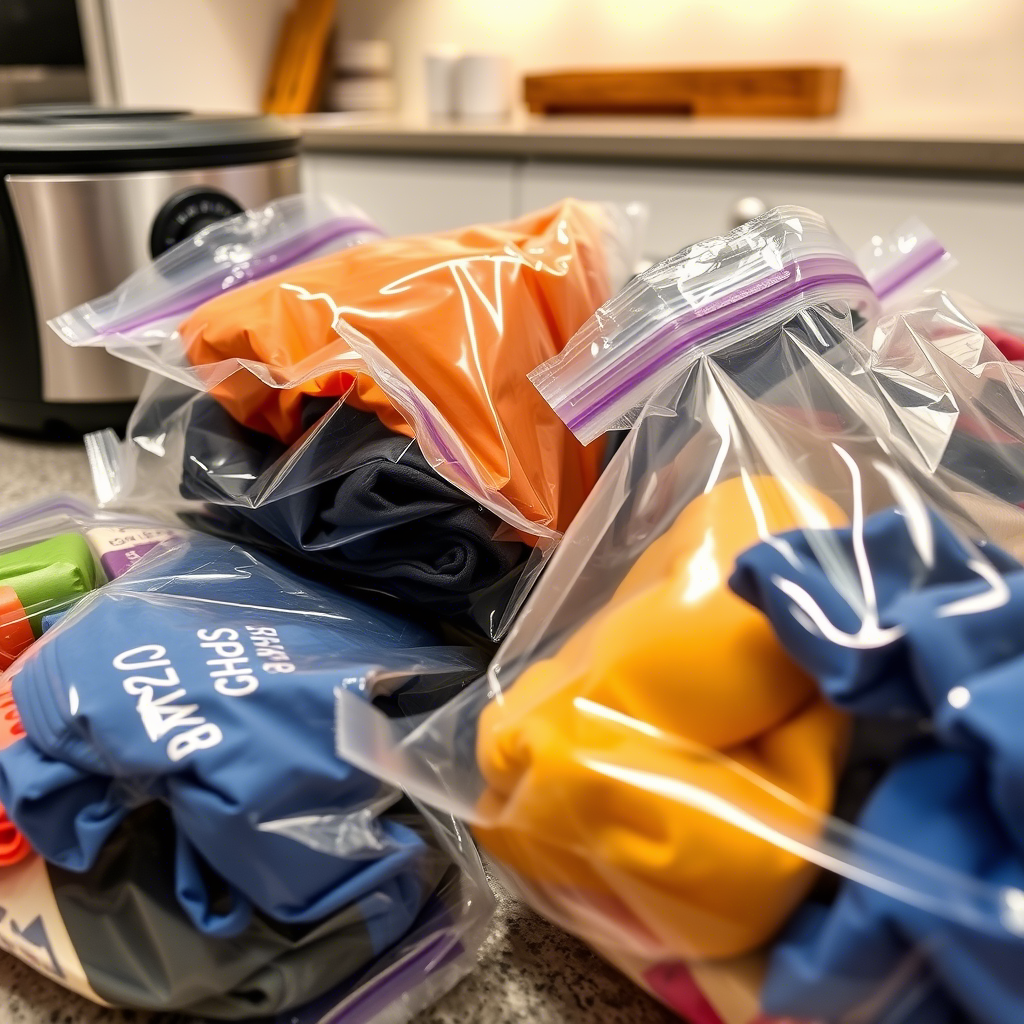1. Introduction
Ever opened your fridge to find spoiled food or struggled to fit bulky winter clothes into your closet? Vacuum packaging bags are the unsung heroes of organization and preservation. These airtight bags remove oxygen to keep contents fresh, compact, and protected—whether it’s food, clothing, or travel essentials.
In this guide, we’ll break down how vacuum bags work, their benefits, and practical tips to use them like a pro.
2. What Are Vacuum Packaging Bags?
Vacuum packaging bags are specially designed storage bags that use air removal and heat sealing to create an oxygen-free environment. They come in two main types:
- Disposable bags: Made of durable plastic/nylon, ideal for one-time food storage.
- Reusable bags: Often silicone-based, with washable designs for eco-friendly use.

Key Features:
- Textured surfaces (to help air escape during sealing).
- One-way valves (for machine vacuum sealers).
- BPA-free materials (food-safe options).
3. Key Benefits of Vacuum Packaging Bags
✅ Extend Food Freshness
By removing oxygen, vacuum bags slow down bacterial growth and oxidation. For example:
- Meat lasts 3–5x longer in the freezer.
- Coffee beans stay aromatic for months.
✅ Save Space
Perfect for small homes or travel:
- Reduce bulky bedding/clothing by 75%.
- Pack more in luggage without wrinkles.
✅ Protect Against Moisture & Pests
Ideal for:
- Storing seasonal clothes (no moths or mildew).
- Emergency kits (keeps medical supplies dry).
4. Common Uses & Applications
| Use Case | Example |
|---|---|
| Food Storage | Meat, cheese, meal prep, sous vide cooking. |
| Home Organization | Blankets, pillows, kids’ toys. |
| Travel | Compression bags for luggage. |
| Emergency Prep | Waterproof documents, first-aid kits. |

5. How to Use Vacuum Packaging Bags
Step-by-Step Guide:
- Fill the bag: Leave 2–3 inches for sealing.
- Seal one end (if open-ended).
- Remove air: Use a vacuum sealer or hand pump.
- Heat-seal: Run the sealer’s heat bar across the open edge.
Pro Tip: For liquids (soups, marinades), freeze first to prevent spills!
6. Choosing the Right Vacuum Bags
| Factor | What to Look For |
|---|---|
| Compatibility | Match to your sealer brand (e.g., FoodSaver, NutriChef). |
| Thickness | 3–4 mil for food; 6–8 mil for sharp items. |
| Eco-Friendly | Silicone bags (e.g., Stasher) for reuse. |

7. Potential Drawbacks & Solutions
- ❌ Single-use waste: Solution: Opt for recyclable or reusable bags.
- ❌ Not for all foods: Avoid vacuum-packing:
- Mushrooms (release gases).
- Soft bread (gets crushed).
8. FAQs
Q: Can I reuse vacuum bags?
A: Only if labeled “reusable.” Most food bags are single-use.
Q: Are they microwave-safe?
A: Only if specified. Most require removing food before heating.
Q: How long does food last?
A: In the freezer:
- Raw meat: 2–3 years (vs. 6 months normally).
- Vegetables: 1–2 years.
9. Conclusion
Vacuum packaging bags are a game-changer for food preservation, travel, and home organization. By removing air, they keep items fresh, compact, and protected—saving you money and space.


